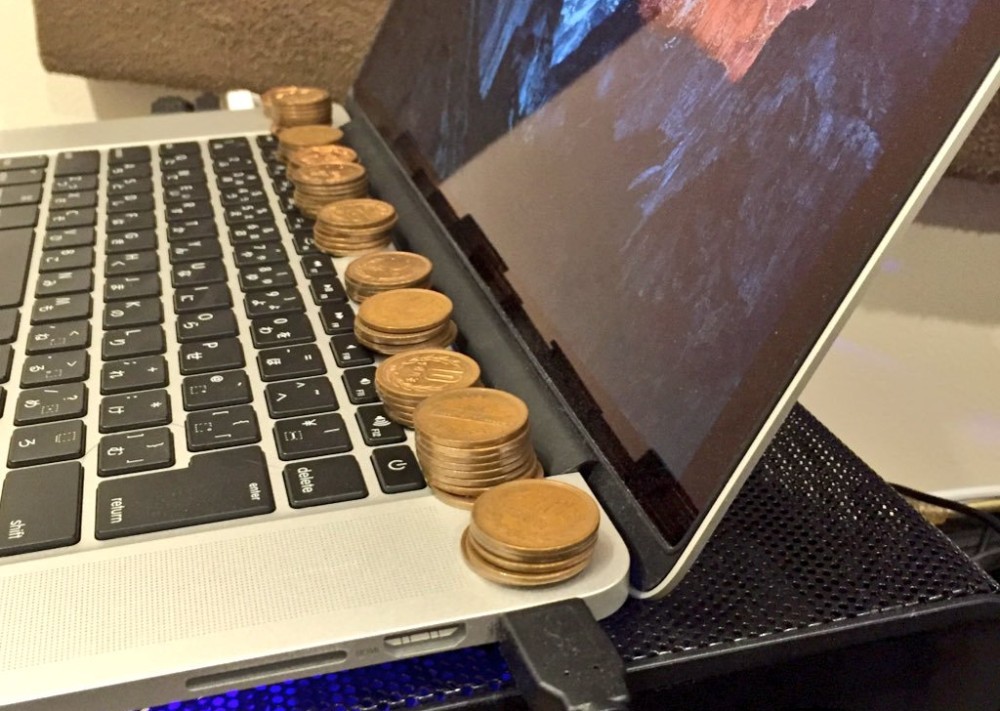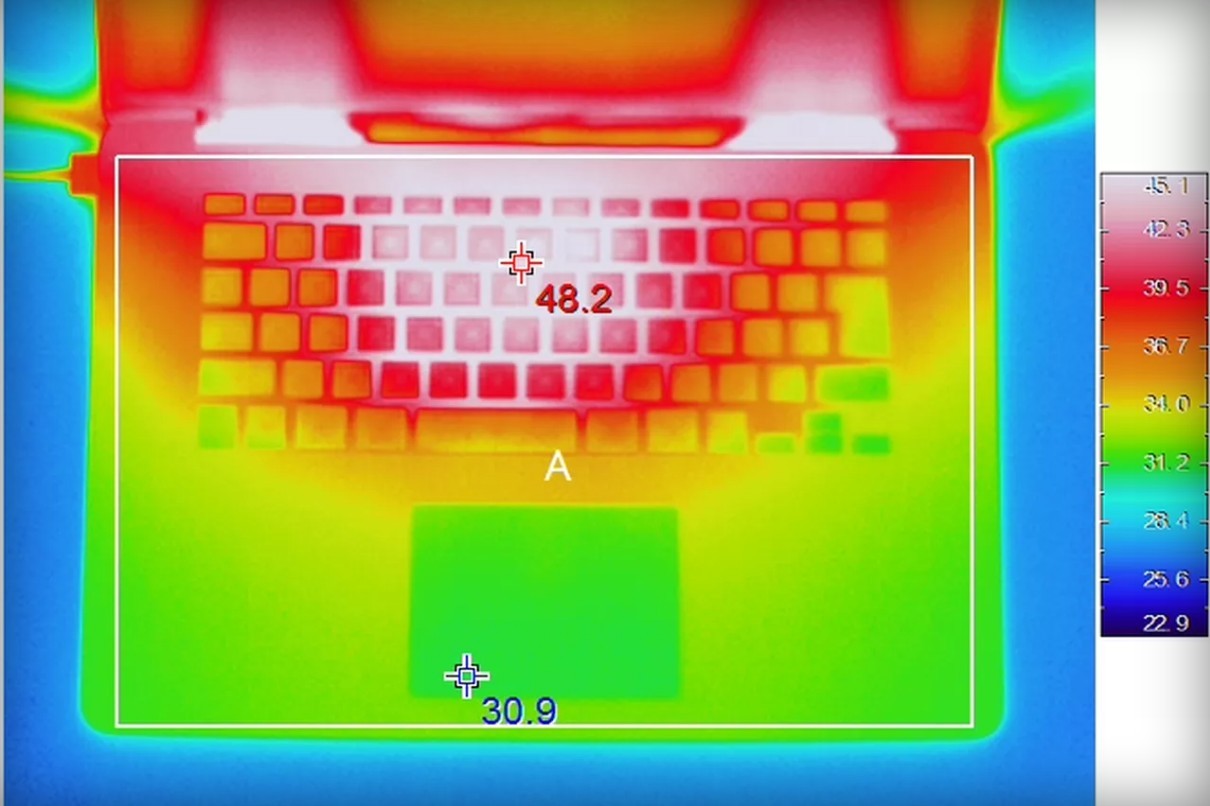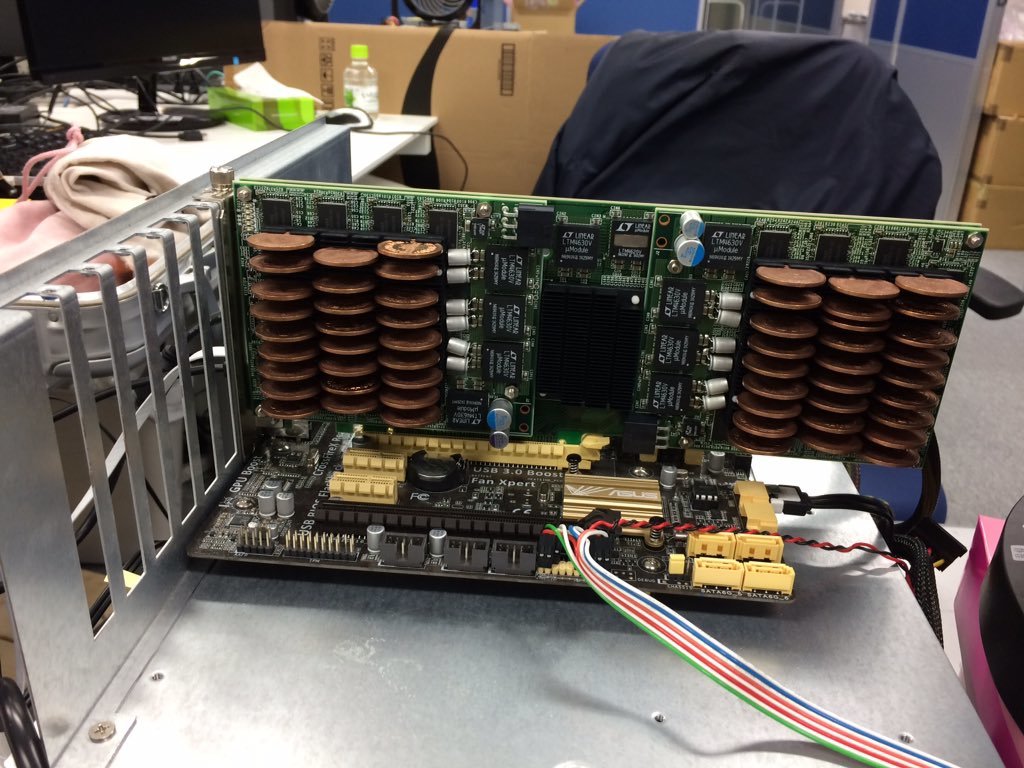Japanese perversions. Copper coins effectively cool the laptop

Photo: Suzuki Akinori
Many of us work with a laptop every day. For some, this is generally the main and only computer. Surely they are well aware that with intensive use, the laptop heats up quite strongly. For example, the upper part of the keyboard of the 2012 Macbook Pro heats up to 48.2 ° C, thermal shots under the cut.
Manufacturers are trying to make the new models as productive and compact as possible. Sadly, cooling inevitably suffers.
Japanese engineer Suzuki Akinori (Suzuki Akinori) found an original way out of the situation: his homemade laptop radiator consists of ... stacks of 10 yen coins from a copper alloy installed on the hottest part of the case.
The idea is quite logical. Copper has a greater thermal conductivity than plastic and aluminum, of which the body is made of almost any laptop.
| Material | Heat conductivity, W / (m · K) |
|---|---|
| Copper | 401 |
| Aluminum | 202-236 |
| ABS plastic | 0.1-0.3 |
According to the laws of thermodynamics, this means that if the temperature of the copper radiator is lower than the temperature of the plastic / aluminum case, then copper will effectively remove heat from the case. In turn, the dissipation of heat by air is a convective process and practically does not depend on the thermal conductivity of the heat-generating material, but depends only on the characteristics of the air (temperature, humidity, flow rate).
Electronics manufacturers are trying to solve this problem with the help of heat-dissipating polymer composites, but these materials have not yet found wide application, so the plastic case of almost any electronic gadget always heats up when used.

As can be seen in the 2012 Macbook Pro thermal survey data, the laptop body heats up to the maximum at the top of the keyboard and along the screen. It is there that it is most convenient to place stacks of coins.

Photo: Suzuki Akinori Suzuki Akinori's
idea was picked up by others. With the same tenth coins, some craftsmen began to cool video cards and motherboards.

Photo: Suzuki Akinori
The effectiveness of this cooling is not entirely understood. It would be good to conduct a thorough study in the laboratory. But judging by the reviews on the author’s twitter, the method very effectively showed itself on the laptops of many users.
For comparison, Russian coins of 10-50 kopecks are made of brass, the thermal conductivity coefficient of which is 106 W / (m · K). This is lower than that of aluminum, so it makes no sense to cool the aluminum case with such coins, but the plastic one is fine (a difference of 100 times).
Unfortunately, pure copper coins in Russia have not been minted since 1926. Prior to this, copper pennies were issued from 1700.
